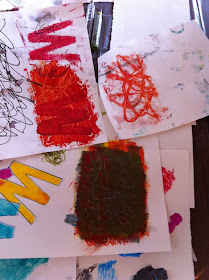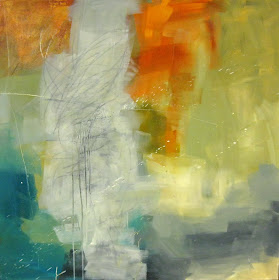 |
| Golden, Blick Studio, and Liquitex Basics Paints |
 |
| Americana Craft Paints |
Pigment Load
Pigment is the expensive part of paint. The higher the pigment load, or relative proportion of pigment to "binder" (acrylic polymer emulsion, in acrylic paints, plus, in cheaper paints, various fillers), the more expensive the paint will be on a per volume basis.A paint with high pigment load, any professional quality paint, will produce more intense color, and can be extended (diluted) with medium (matte medium, glazing medium, etc) much further than a paint with low pigment load (craft paint). In my Unlocking the Secrets of Color class I always suggest that you extend the darker colors (pthalo blue, especially) with medium; otherwise they look almost black because the pigment is so dense.
In this video I am comparing professional quality paint (Golden, though I also use some Holbein paints and Sennelier, and you may find brands that you prefer) with craft paint (Americana), and then I try student- or economy-grade paints, in two different colors. The student-grade paints are in two different brands: Blick Studio Acrylic for the quinacridone magenta, and Liquitex Basics for the yellow. So... this is not very scientific. I'm not intending to compare brands, just to compare color intensity with two different colors, over three different price-ranges of paint. I suggest you conduct your own tests using this credit card scraping method.
Another test of pigment load is to mix your paint with titanium white and see how much white it takes to achieve a given "tint" of your color. This is called "tinting strength": the more white you have to add, the greater the pigment load and the better the tinting strength. Your results are likely to vary a bit from color to color, and the different brands of paints will vary as well.
Transparency and opacity are a different issue, and we'll look at it in a later post. Hope this is helpful.














































